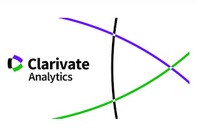Uso de técnicas de relajación en una clínica de psicología
Resumen
El objetivo del artículo es identificar el uso de las técnicas de relajación (TR) en la práctica de la Psicología Clínica asistencial. Se analiza el tipo de técnicas de relajación, su frecuencia de uso, tanto en general como en función del diagnóstico, y su relación con los resultados del tratamiento. De los 880 pacientes de la Clínica Universitaria de Psicología de la Universidad Complutense, con todo tipo de diagnóstico, el 67.2% son mujeres y su edad media es de 32.79 años. Los resultados señalan que el 70.5% de los casos ha utilizado alguna TR, siendo el Control de la Respiración la más frecuente (72.3%). Predomina su uso en trastornos de ansiedad (87.8%), somatomorfos (84.2%) y control de impulsos (77.8%). Hay un incremento importante en el uso de TR en los casos con comorbilidad (82.4% frente a 68%). Los porcentajes de altas que han utilizado Control de Respiración o Relajación Progresiva están alrededor del 69%, frente al 58.1% en los que no se han utilizado ninguna TR. Se discuten los resultados destacando el valor de usar TR, incluso con independencia del diagnóstico.
Descargas
Citas
Arntz, A. & Van den Hout, M. (1996). Psychological treatments of panic disorder without agoraphobia: Cognitive therapy versus applied relaxation. Behaviour Research and Therapy, 34, 113-121.
Barlow, D. H., Gorman, J. M., Shear, M. K. & Woods, S. W. (2000). Cognitive-behavioral therapy, imipramine or their combination for panic disorder: a randomized controlled trial. Journal of the American Medical Association, 283, 2529–2536.
Bernstein, D. A. & Borkovec, T. D. (1973). Progressive relaxation training: A manual for the helping professions. Champaign, IL: Research Press.
Chambless, D. L. & Ollendick, T. H. (2001). Empirically supported psychological interventions: Controversies and evidence. Annual Review of Psychology, 52, 685-716.
Conrad, A. & Roth, W. T. (2007). Muscle relaxation therapy for anxiety disorders: it works but how? Journal of Anxiety Disorders, 21, 243-264.
Davis, M., Eshelman, E. R. & McKay, M. (2008). The relaxation and stress reduction workbook (6th ed.). Oakland, CA: New Harbinger Publications.
Donegan, E. & Dugas, M. J. (2012). Generalized anxiety disorder: A comparison of symptom change in adults receiving cognitive-behavioral therapy or applied relaxation. Journal of Consulting and Clinical Psychology, 80, 490-496.
Durham, R. C., Chambers, J. A., Macdonald, R. R., Power, K. G. & Mayor, K. (2003). Does cognitive-behavioural therapy influence the long-term outcome of generalized anxiety disorder? An 8–14 year follow-up of two clinical trials. Psychological Medicine, 33, 499-509.
Fairburn, C. G., Marcus, M. D. & Wilson, G. T. (1993). Cognitive-behavioral therapy for binge eating and bulimia nervosa: A comprehensive treatment manual. En C. G. Fairburn y G. T. Wilson (Eds.), Binge eating: Nature, assessment, and treatment (pp. 361-404). New York: Guilford Press.
Forand, N. R., Evans, S., Haglin, D. & Fishman, B. (2011). Cognitive behavioral therapy in practice: Treatment delivered by trainees at an outpatient clinic is clinically effective. Behavior Therapy, 42, 612-623.
Furukawa, H. & Sakano, Y. (2007). Influence of personality traits and cognitions on autogenic training induced anxiety. Japanese Journal of Autogenic Therapy, 27, 1-10.
Furukawa, H. (2010). Interference factor on the effects of relaxation in the treatment of anxiety with autogenic training. Japanese Journal of Autogenic Therapy, 30, 3-12.
Hansen, N. B., Lambert, M. J. & Forman, E. M. (2002). The psychotherapy dose-response effect and its implications for treatment delivery services. Clinical Psychology: Science and Practice, 9, 329-343.
Herink, R. (1980). An analysis of the psychotherapy handbook. New York: New American Library.
Heuzenroeder, L., Donnelly, M., Haby, M. M., Mihalopoulos, C., Rossell, R., Carter, R., . . . Vos, T. (2004). Cost-effectiveness of psychological and pharmacological interventions for generalized anxiety disorder and panic disorder. Australian and New Zealand Journal of Psychiatry, 38, 602-612.
Hoyer, J., Beesdo, K., Gloster, A. T., Runge, J., Höfler, M. & Becker, E. S. (2009). Worry exposure versus applied relaxation in the treatment of generalized anxiety disorder. Psychotherapy and Psychosomatics, 78, 106-115.
Hyman, R. B., Feldman, H. R., Harris, R. B. & Levin, R. F. (1989). The effects of relaxation training on clinical symptoms: A meta-analysis. Nursing Research, 38, 216-220.
Kazdin, A. E., Kratochwill, T. R. & VandenBos, G. R. (1986). Beyond clinical trials: Generalizing from research to practice. Professional Psychology: Research and Practice, 17, 391-398.
King-Kallimanis, B., Gum, A. M. & Kohn, R. (2009). Comorbidity of depressive and anxiety disorders for older americans in the national comorbidity survey-replication. The American Journal of Geriatric Psychiatry, 17, 782-792.
Labrador, F. (2008). Técnicas de Modificación de Conducta. Madrid: Pirámide.
Labrador, F. J., Estupiñá, F. J. & García Vera, M. P. (2010). Demanda de atención psicológica en la práctica clínica: Tratamientos y resultados. Psicothema, 22, 619-626.
Labrador, F. J. & Ballesteros, F. (2011) Efectividad de los tratamientos para la fobia social en el ámbito aplicado. Psicothema, 23, 560-565.
Labrador, F. J. & Crespo, M. (Dirs.) (2012). Psicología clínica basada en la evidencia. Madrid: Pirámide.
Labrador, F. J. (1998). Técnicas de control de la activación y desensibilización sistemática. En M. A. Vallejo (Ed.), Avances en modificación y terapia de conducta: técnicas de intervención, (pp. 175-212). Madrid: Fund. Universitaria empresa
Labrador, F. J. (2012). Presente y retos de los tratamientos psicológicos. En F.J. Labrador y M. Crespo (Eds.), Psicología clínica basada en la evidencia (pp. 213-236). Madrid: Pirámide.
Labrador, F. J., de Arce, F. & Florit, A. (1996). Entrenamiento en respiración frente a entrenamiento en relajación: Diferencias en medidas psicofisiológicas. Análisis y Modificación de Conducta, 22, 93-114.
Lang, P. J., Davis, M. & Öhman, A. (2002). Fear and anxiety: Animal models and human cognitive psychophysiology. Journal of Affective Disorders, 61, 137-159.
Lehrer, P. M. & Woolfolk, R. L. (2007). Research on clinical issues in stress management. En P. M. Lehrer, R. L. Woolfolk y W. E. Sime (Eds.), Principles and practice of stress management (3.a ed., pp. 703-721). New York, NY: Guilford Press.
Ley, R. (1988). Panic attacks during relaxation and relaxation-induced anxiety: A hyperventilation interpretation. Journal of Behavioral Therapy and Experimental Psychiatry, 19, 253-259.
Ost, L. G. & Breitholtz, E. (2000). Applied relaxation vs. cognitive therapy in the treatment of generalized anxiety disorder. Behavioral Research and Therapy, 38, 777-790
Otto, M. W., Smits, J. A .J. & Reese, H. E. (2005). Combined Psychotherapy and Pharmacotherapy for Mood and Anxiety Disorders in Adults: Review and Analysis. Clinical Psychology: Science and Practice, 12, 72–86.
Pagnini, F., Manzoni Gian, M., Castelnuovo, G. & Molinari, E. (2010). The efficacy of relaxation training in treating anxiety. International Journal of Behavioral Consultation and Therapy, 5, 264-269.
Regier, D. A., Rae, D. S., Narrow, W. E., Kaelber, C. T. & Schatzberg, A. F., (1998). Prevalence of anxiety disorders and their comorbidity with mood and addictive disorders. British Journal of Psychiatry, Supplement, 173, 24-28.
Robbins, T. W. & Everitt, B. J. (1995). Arousal systems and attention. En M. S. Gazzaniga (Ed.), The cognitive neurosciences, (pp.703-720). Cambridge, MA: The MIT Press.
Sánchez, J., Rosa, A. I. & Olivares, J. (1998). Las técnicas de relajación en el campo de la psicología clínica y de la salud en España: Una revisión meta-analítica. Cuadernos de Medicina Psicosomática, 45/46, 21-36.
Shadish, W. R., Matt, G. E., Navarro, A. M., Siegle, G., Crits-Christoph, P., Hazelrigg, M. D., . . . Weiss, B. (1997). Evidence that therapy works in clincally representative conditions. Journal of Consulting and Clinical Psychology, 65, 355-365.
Shadish, W. R., Navarro, A. M., Matt, G. E. & Phillips, G. (2000). The effects of psychological therapies under clinically representative conditions: A meta-analysis. Psychological Bulletin, 126, 512-529
Siev, J. & Chambless, D. L. (2007). Specificity of treatment effects: Cognitive therapy and relaxation for generalized anxiety and panic disorders. Journal of Consulting and Clinical Psychology, 75, 513-522.
Smith, J. C. (2001). Seok chan bangs study of ABC relaxation training as a treatment for depression for the korean elderly. En J. C. Smith (Ed.), Advances in ABC Relaxation: Applications and inventories, (pp. 205-208). New York, NY: Springer Publishing Co.
Stevens, S. E., Hynan, M. T., Allen, M., Braun, M. M. & McCart, M. R. (2007). Are complex psychotherapies more effective than biofeedback, progressive muscle relaxation, or both? A meta-analysis. Psychological Reports, 100, 303-324.
Stewart, R. E. & Chambless, D. L. (2009). Cognitive-behavioral therapy for adult anxiety disorders in clinical practice: A meta-analysis of effectiveness studies. Journal of Consulting and Clinical Psychology, 77, 595-606.
Stewart, S. H. & Conrod, P. J. (2008). Anxiety and substance use disorders: The vicious cycle of comorbidity. New York, NY: Springer Science + Business Media.
Swinbourne, J., Hunt, C., Abbott, M., Russell, J., St Clare, T. & Touyz, S. (2012). The comorbidity between eating disorders and anxiety disorders: Prevalence in an eating disorder sample and anxiety disorder sample. Australian and New Zealand Journal of Psychiatry, 46, 118-131
Vázquez, M. I. (2001). Técnicas de relajación y respiración. Madrid: Síntesis
Vila, J. & Fernández-Santaella, M. C. (2004). Tratamientos psicologicos. La perspectiva experimental. Madrid: Pirámide.
-
Resumen13311
-
PDF6809
-
Sin título6809
Sobre Derechos de autor y Licencias, más detalles aquí.










